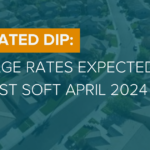By now you understand the concept of a hard money loan, its advantages, and the hard money lender’s ability to issue you a proof of funds letter so you can act quickly. Since you have accepted an offer and done all of your due-diligence on the property, it is important to understand the loan process for securing a hard money loan. Knowing how to get a hard money loan will help you expedite the process and ensure you are able to close quickly and meet your scheduled closing date.
Initial Contact
In order to save time in the hard money loan process, a flipper usually starts with a call to their hard money lender to explain the potential deal and see if the lender has an appetite for it. You should be prepared with information on the deal such as the location of the property, the purchase price, any rehab or construction budgets if applicable, what you perceive the future value of the property to be, and what your intended exit strategy is.
After discussing all of this information, a hard money lender will typically want to get a sense of you, the borrower, especially if it is the first time you are working with them. They will ask about your experience level with fix and flips, your financials and credit history. Unlike a traditional lender, hard money lenders tend to have flexible underwriting guidelines that take all of these factors into account with varying degrees of importance, but they do need the information provided in a clean and concise fashion in order for you to get a hard money loan.
Underwriting
Since speed is crucial in putting together a fix and flip deal, hard money underwriters should be able to conduct an initial underwrite of your deal in 24 hours. While the exact procedure may vary from lender to lender, the initial items that hard money lenders generally require during underwriting include:
- A completed loan application
- The purchase contract for the property
- A scope of work for renovations including estimated timing and costs.
Once the underwriter receives and reviews these items, they will schedule an appraisal to inspect the property and make sure the estimated After Repair Value matches what the investor has estimated. During the hard money loan process, the underwriter will ask you for additional documentation about your project details, overall experience, income, assets and credit. In addition to this, they will want to review title history and property insurance to ensure there are no encumbrances on the property. If there are repairs to be completed or if it is a new construction project, the underwriter will want a background on the builder. Lastly, the underwriter will want information on the purchasing entity, such as the name and Employer Identification Number or EIN. Upon receiving and reviewing all documentation, the underwriter will be able to approve the loan and schedule a closing.

Loan Closing
The hard money loan closing will occur at either a title company or at an attorney’s office. During the closing of a hard money loan, two different transactions will occur. The first will be the purchase of the property, and the second will be the loan settlement. Most of the due-diligence on the purchase will be completed, so that portion is very straight-forward. For the loan settlement, the borrower will need to sign a variety of loan documents, which may vary depending on how the fix and flip deal is structured. Some of the normal documents you can expect to sign are a note, a mortgage, a security agreement, a personal guarantee, an assignment of leases and rents and lastly an investment affidavit to prove that it is indeed an investment property and not owner-occupied.
If the deal is more complex, other documents may also be included, but they should directly relate to how the deal is structured. The hard money lender will have already wired the funds-to-close to the title company or attorney, so upon signing, they will wait to get a “disbursement approval” from the lender. Once they have this, the title company or attorney will send the funds to the seller.
Servicing (Draw Management)
In the case of a new construction or rehab deal, the borrower will work with the contractor to create something called a “Draw Schedule”. Draw schedules are used during projects that involve rehab and/or new construction because the lenders disperse this portion of the funds in stages. They do this for two primary reasons: first to make sure the borrower is indeed using the funds to increase the value of the property, thus protecting their collateral and second, to help the borrower stick to their budget. Once the borrower has requested a draw the lender will schedule an inspection and the funds are usually wired within 3 or 4 days.
Payoff
Once the project is complete, it is time to pay off the hard money loan. Pay close attention to the terms of the hard money deal as certain lenders will charge a pre-payment penalty or an “interest lock-out” where they are guaranteed a certain amount of interest no matter when you pay off the loan (Asset Based Lending does not do this). You’ll want to look for a hard money lender that is just happy to get their money back, and you can move on to your next fix and flip project!







0 Comments